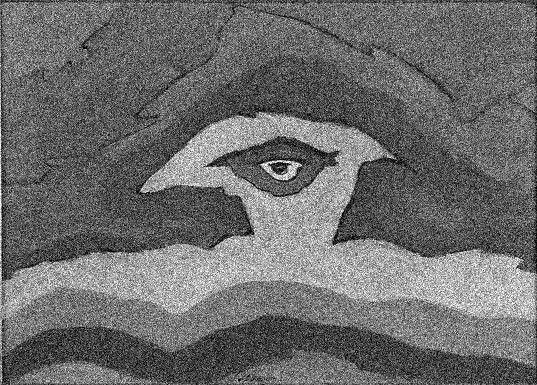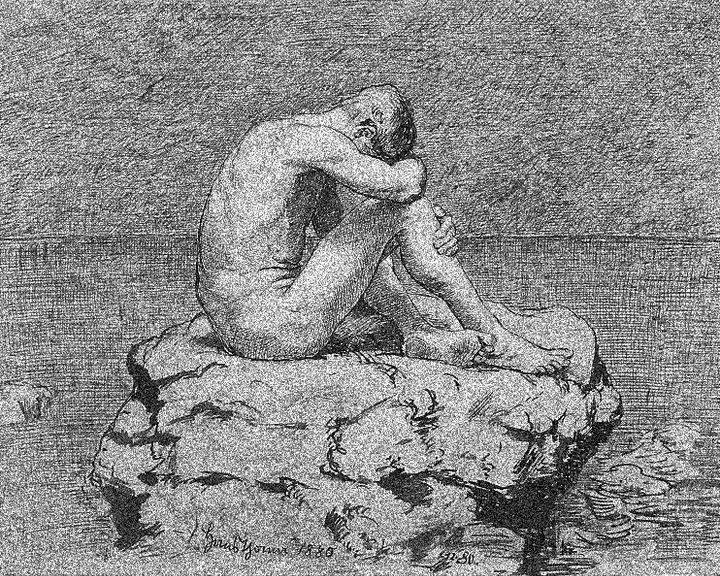The Class Character of the Coronavirus Panic
In the panic attack, the traumatic event is created by the imagination and this construction (a micro-delusion), built in loneliness and anxiety, has the same power as the real trauma.

In the panic attack, the traumatic event is created by the imagination and this construction (a micro-delusion), built in loneliness and anxiety, has the same power as the real trauma.
Franco De Masi, “The psychodynamic of panic attacks,” International Journal of Psychoanalysis, 2004
Early in my clinical training I learned to never be surprised by my patients. Still, I was admittedly taken aback by their reactions to the coronavirus pandemic. One by one, my child patients and their caregivers called into our hurriedly scheduled teletherapy sessions this week to inform me that they were “just fine.” I probed further. Weren’t they distressed by social distancing? Weren’t they concerned about their cohabiting grandparents’ vulnerability to the disease? Weren’t they worried about the economic recession? My questions fell flat; they were unperturbed by recent events. In fact, many of the families I work with had only just learned of the public health crisis in its enormity when schools closed in Philadelphia this week, and they were suddenly saddled with childcare responsibilities. After quickly registering my bewilderment, I ditched my session plan of relaxation exercises and self-care regimens, and continued with treatment as usual.
I work in a free mental health clinic that serves child trauma survivors in Philadelphia, the poorest big city in America. Many of my patients and their families live below the poverty line; are exposed to environmental toxins and crumbling infrastructure; and have survived considerable neighborhood, interpersonal, and sexual violence. The amount of hardship they experience on a daily basis is more than most experience in a lifetime, and yet they manage to continue moving forward doing what they must to survive. Despite frequent disruptions of precarity and violence, life goes on because it must—as usual.
It should not have come as a shock, then, when my patients and their families exhibited few if any signs of fear when the coronavirus panic went viral. For them, the global pandemic is not a break from normalcy. The outbreak and its social repercussions are continuous with their experience of a world where bad things happen and where they lack control of the outcome. With the economic ramifications of the outbreak yet to set in, my patients’ more immediate day-to-day concerns are more pressing. As recent studies on helplessness have demonstrated, in the face of persistent and prolonged aversive events, passivity is, in fact, the default psychological response. Though helplessness can be unlearned when people are given the opportunity to control events, my patients and their families have rarely, if ever, been given this option. In the face of despair they have no choice but to accept the status quo.
There are of course very real, structural factors beyond the psychological that determine my patients’ and their families’ responses to the recent series of events. For one, many of my patients don’t have regular access to devices where they can read or watch the news. They’ve managed to avoid being inundated with the non-stop reporting of updates and often distorted speculation of the worst outcomes. For most, at least for now, there have been no objective changes to their lives. Many of these caregivers must continue clocking in at work—their employers do not offer paid sick leave and refuse to adequately respond to the Center for Disease Control guidelines. Others did not have employment before the crisis, which means that the recent quarantine recommendations have had little impact on their day-to-day existence. One mother lost her job, and she is fortunate to be a member of a union that is fighting for a severance package—she is rightfully more concerned about getting dinner on the table for her kids than she is about getting sick. Even if some were tempted to succumb to anxiety about the disease, the families I work with would not have the money to take the often irrational precautionary measures many have taken in response to the crisis. They cannot afford a month’s supply of hand sanitizer, toilet paper, or soap, nor do they have the space in their apartments to store these household products.
In the calm before the storm that is the imminent economic recession, the absence of fear among my patients and their families stands in stark contrast with the panic-fueled shopping sprees of the middle class. If we understand panic as an irrational response to “loneliness and anxiety,” not a measured response to a public health crisis—which is of course both vitally necessary and still sorely lacking—why are those with more resources to combat the crisis the ones most prone to these irrational behaviors? In some respects, the middle strata of society has the most to lose materially. In yet another sense, the psychological impact of the pandemic cuts deep into the core of middle-class anxieties.
Over four decades of neoliberalism have immiserated the poor and working class so completely that deprivation and despair are now simply the new normal for them. On the other extreme, the rich have only gotten richer, and it shows. The uber-wealthy are seemingly unfazed by the threat of coronavirus. (The proliferation of celebrity web broadcasts and the peddling of cure-alls or self-care routines would be insulting enough, without the blatant evidence that wealth renders one immune to lackluster healthcare and its corresponding hardships.)
The middle class, broadly construed, has a lot at stake, both materially and psychically, in the face of the looming crisis. They will undoubtedly be hit the hardest by plummeting stock prices, and they will be the least likely to reap the benefits of the government stimulus package, reserved for the more affluent. In response to the threat of illness, the middle class cannot afford to get sick, to lose days of productivity as others in their peer-group get ahead, advancing their careers. Ironically, for workers who predominantly avoid physical toil, “wellness” has become more central to working in an economy where mental endurance and attention are hot commodities.
As a result, in the wake of the pandemic, they can only cling to their limited purchasing power as a consolation prize. Without state support and with little independent wealth to sustain themselves through a period of uncertainty, white collar workers have been forced to resort to individual solutions to collective problems. Stricken with panic, they go on shopping sprees—rather, they welcome their grocery and household product deliveries from largely undocumented immigrant workers—and safely return to their bunkers, frantically refreshing The New York Times webpage.
The different psychological responses along class lines to coronavirus concords with global psychiatric disorder prevalence estimates according to social status. Data from some of the best designed, largest epidemiological surveys suggest that, counterintuitively, high-income and highly socioeconomically unequal countries have significantly greater rates of anxiety disorders than low-income, more equitable countries. Further, within these highly unequal, wealthy nations, those most prone to anxiety are those who occupy what Erik Olin Wright has termed “contradictory class locations.” These data suggest that it is not the poor, workers, or the highly affluent who suffer most from psychological distress. Rather, these disorders seem to be felt most acutely by the middle class. In other words, it may be the middle manager or low-level supervisor, who lacks the agency to meaningfully alter her social conditions, but has the education and financial means to place her fingers in the dike. In recent years, she has become overwhelmed as the number of leaky holes multiply.
Thirty years ago Barbara Ehrenreich perceptively anticipated and catalogued the unique anxieties that terrorize the middle class in her book Fear of Falling. She described how, in the face of a hollowed-out welfare state and the dwindling opportunities available to those with letters after their names, white collar workers are filled with dread about their prospects to secure gainful employment and relative economic stability. This status anxiety, both material and ideological, feeds into a particularly pernicious and rugged individualism. In order to stay afloat, the middle class must resort to a relentless egoism, ruthless perfectionism and self-criticism, and antisocial behavior.
We need an emergency expansion of Medicare because universal coverage is the best way to ensure that no one skips treatment on account of financial concerns. Along with the government takeover of the production of necessary equipment like protective masks, this is the best public health measure we can take to address the pandemic, and to prevent future ones. But we also need Medicare for All because it provides a basis for social solidarity that alleviates the middle-class terrors that threaten to worsen an already harrowing situation. In the wake of this public health disaster and the impending economic recession, we need the state—not our psychic fantasies—to fill the void created by capitalism’s social distancing.
■
Briana Last is just mopping things up.



